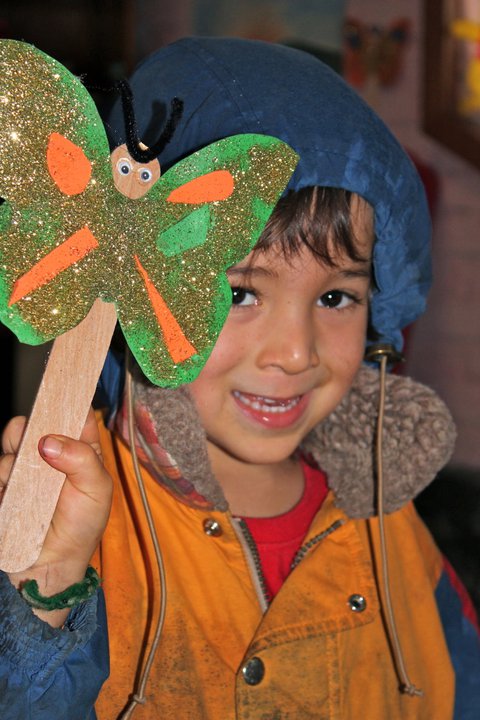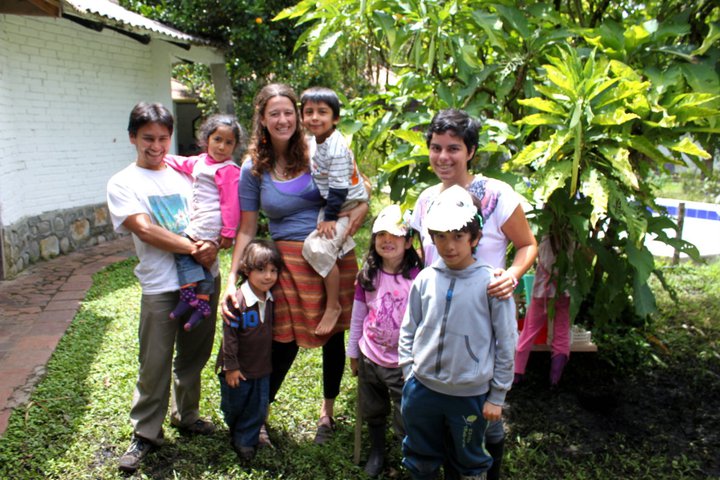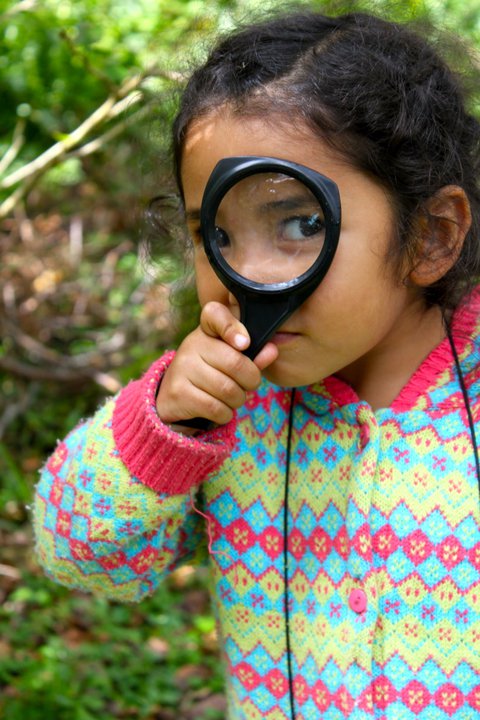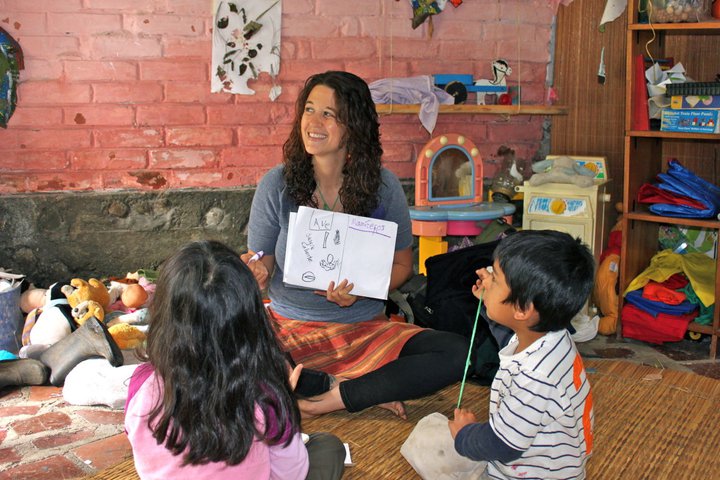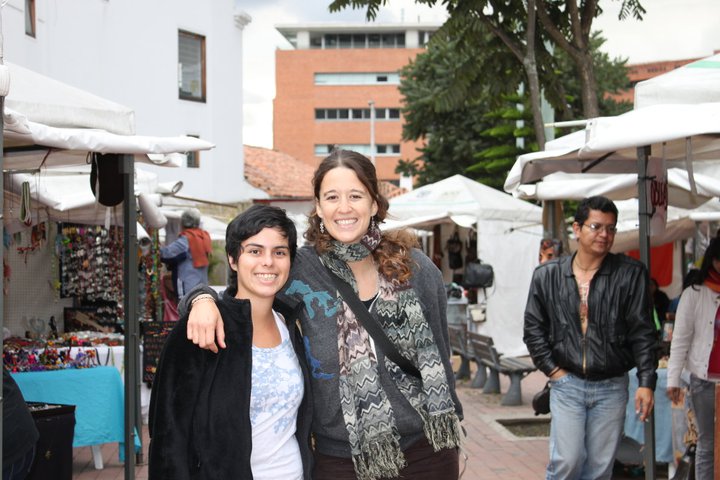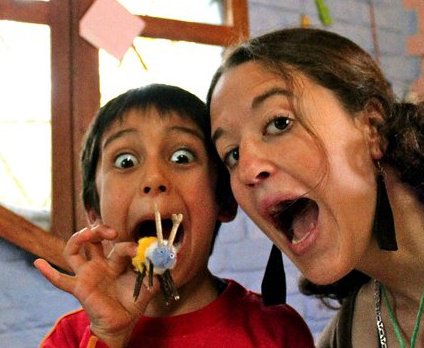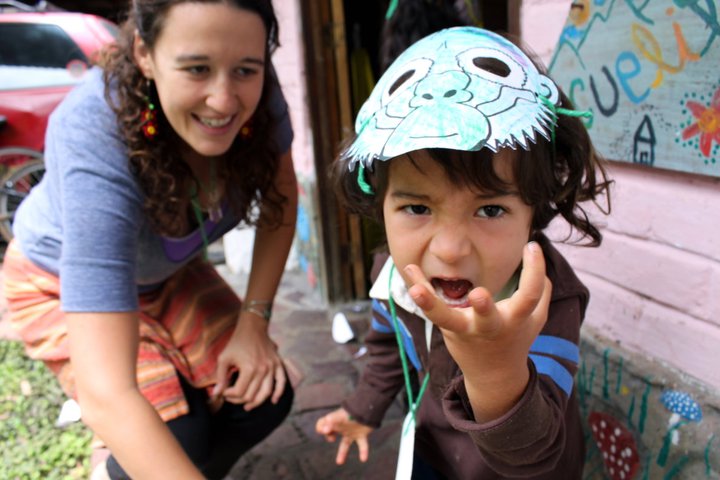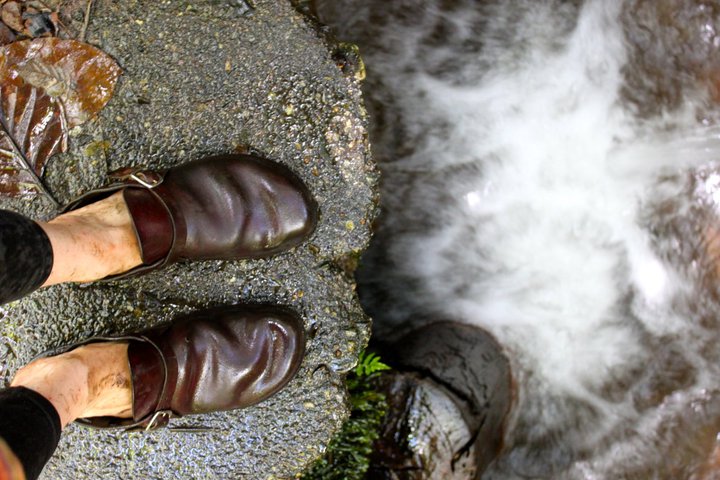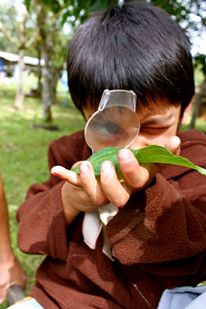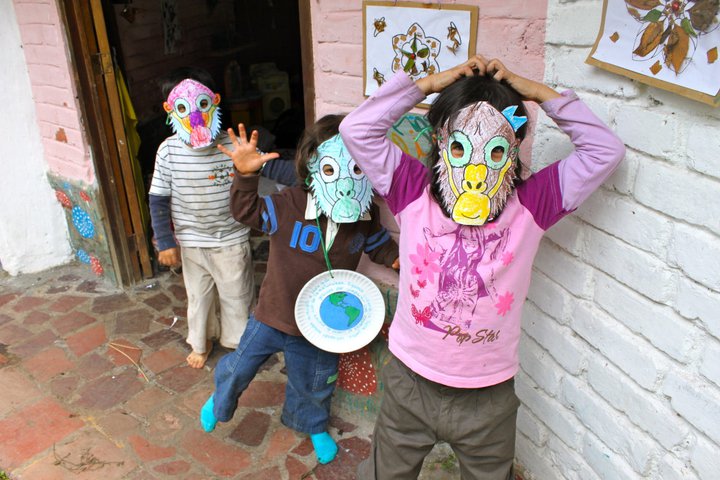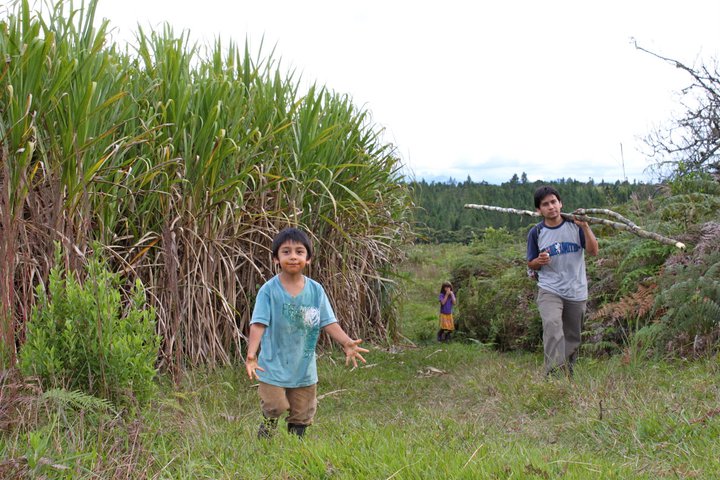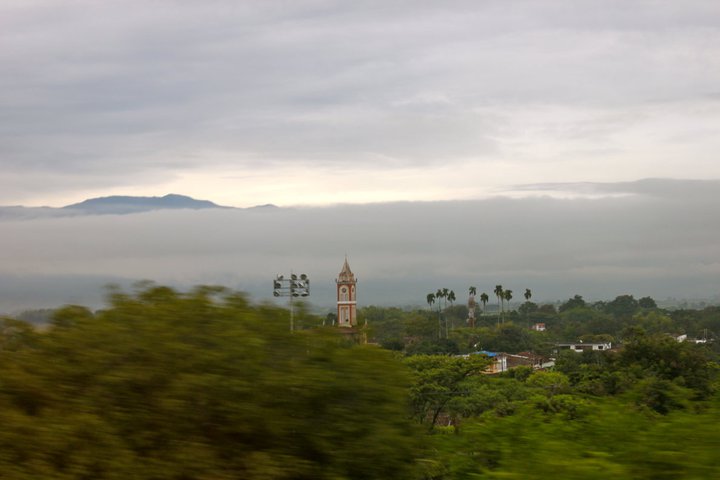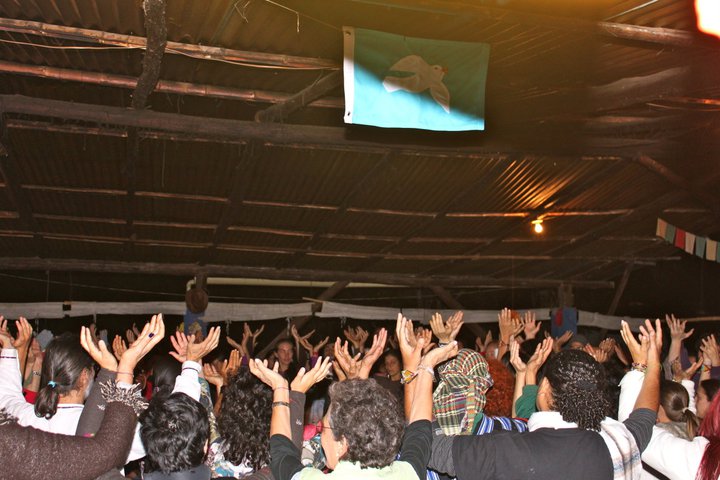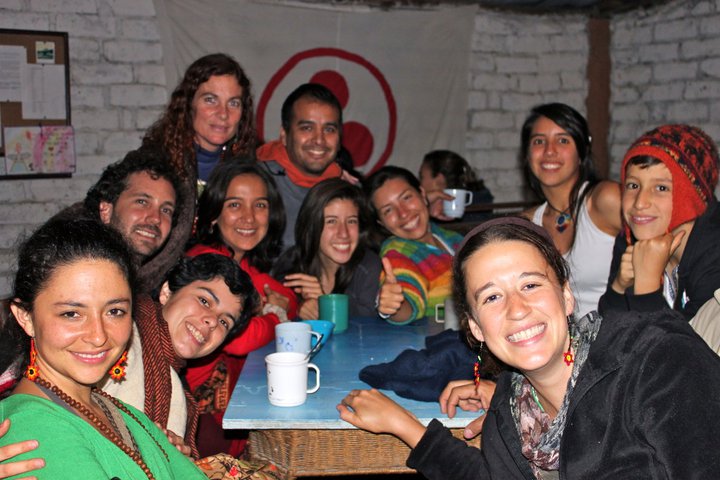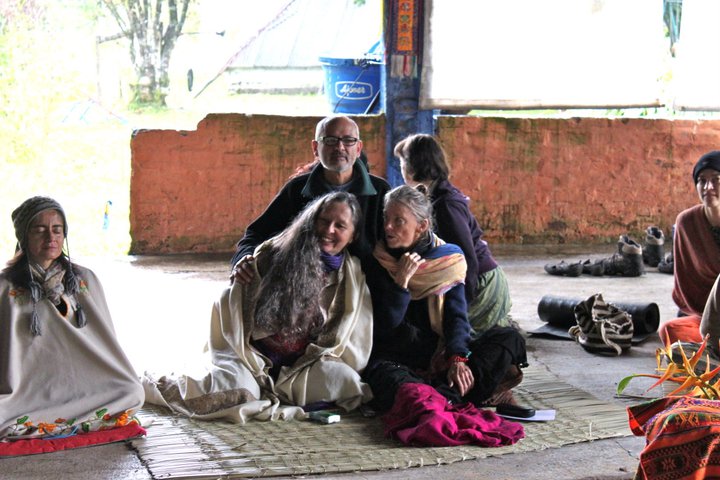A thick blanket of clouds settles above rolling valleys of green and high peaks of blue. There is a wildness among the calm, a mystery behind the seen, a danger lurking beneath the beauty. The Northern Andes mountains of Colombia are home to incredibly unique animals and vibrant cultures that have been threatened by civil violence.
In April of 2011, I spent a week camping in the rainy Andes of Cauca, Colombia at the eco-village Atlantdia. I participated in a week long Universal Dances of Peace training workshop and taught environmental lessons to the children of the village.
I also spent a weekend exploring the colorful markets of Bogotá, the largest Andean city and capital of Colombia. Located at an elevation of 8612 ft, with a population of 8 million people, Bogotá is a bustling metropolis nestled snugly among steep walls of green that seem to disappear into the sky.
The Andes line the Western edge of the South American continent from Venezuela to Chile. This massive mountain range is about 4,300 miles long, 124 miles wide, and contains some of the highest peaks in the world. Potatoes, tobacco, and quinine (the malaria cure) all originated in the Andes and a high degree of endemism is found among both flora and fauna. The rainforests that once encircled the Northern Andes have mostly been replaced by agricultural land, threatening rare species such as the mountain tapir, the Caucan guan, and the spectacled bear.
The spectacled bear is the only bear found in South America. Throughout the Andes, they feed mostly on fruit and bromeliads, and serve as important seed dispersers. They are found in elevations of up to 14,000 feet, and are the highest climbers of all bears. They are shy, and spend their days on platforms that they construct in the Andean treetops. The montane forests where the bears live are highly fragmented and as the degradation around the fragments increases; habitats shrink, corridors close, and hunters have closer access.
I traveled through the Andes on an overnight bus along high mountain roads from Bogotá to Cali, and then took a local bus to the village of Cajibio. From there, a crowded jeep ride on muddy two-tracks brought myself, the ten Colombians, and one German, that I was traveling with to the eco-village.
A small community of ecologically and spiritually like-minded people live in Atlantdia. They are attempting to live a sustainable and peaceful life amid the forests, farms, sugarcane plantations, and possible violence of the Andes foothills.
For one week, 140 people from around the world gathered at Ecoaldea Atlantdia to dance and sing together for peace, unity, and connection. They came from all over Colombia, South and Central America, and even from Spain. Most were Universal Dances of Peace leaders, that gathered to learn from the three renowned teachers visiting the village.
Each day from 6:30am to 10:30pm, there were workshops offered on dancing, singing, meditation, drumming, yoga, and more. Everything was in Spanish, and I was one of very few non-native speakers.
I experienced a deep immersion into both culture and language, as I learned the dances and songs, participated in a native sweat-lodge ceremony, and taught the children.
My friend, Lauris Tellez, and I spent part of each day teaching my Nature Explorers curriculum. We had lessons on plants and seeds, insects and spiders, reptiles, amphibians, fish, birds, and mammals. We made art projects, went on nature walks, and celebrated Earth Day together. The children were young, but they had much to teach me about their language, their environment, and their culture.
The dances themselves served as an important reminder of the positive powers of community connection. A strong spiritual bond formed between the dancers, and tears rolled down cheeks as people sang together for the hope of a peaceful life.
The thought of traveling to The Department of Cauca did scare me. Cauca is one of the regions in the southwestern part of Colombia that has been most affected by ongoing civil conflict. The possibility of being kidnapped is very real. Gunshots and bombs are not uncommon.
There is a feeling of instability, a loss of security, an uneasiness that comes with the questioning of who is in control of your personal safety.
Yet, the only time that I actually felt afraid was before I got on that plane. My head had been filled with preconceived notions, and messages of warning from friends, family, the media, and past Colombian residents.
The violence in Cauca in recent years has been mainly due to the cultivation of Coca, and land tenure conflicts between indigenous peoples. The guerillas of the FARC-EP, the paramilitaries, and the state forces, are fighting for control of drug routes to the Pacific Coast. Or at least, that is the common belief behind Colombian violence.
In reality, a tangled mess of a story lies underneath the obvious, inextricably linking the U.S. government to the Colombian government, and giant U.S. corporations to the para-militaries, and even to Monsanto.
The guerrilla forces started as a frustration at a government that was always controlled by a wealthy bi-partisan system. As they became involved in the drug trade, they gained money, weapons, and power. The paramilitaries arose to combat the guerrillas, and were unofficially supported by the U.S. government and U.S. corporations.
Chiquita was prosecuted for hiring paramilitaries to kill people that lived on land now used for banana plantations. Coca-Cola has been accused of hiring paramilitaries to directly assassinate Colombian Union leaders, silencing their cries for civil rights, and creating an atmosphere of fear. Thanks to the Killer Coke campaign, many U.S. Universities are now banning Coca-Cola products.
International Rights advocate Terry Collingsworth at Conrad & Scherer law firm in Washington D.C. works with his team to fight for basic civil rights. They attempt to force giant corporations to take responsibility for their inhumane practices. One of their cases is in Ecuador, with victims from Plan Colombia.
In 1999, an agreement was made between the U.S. and the Colombian governments to eradicate the Coca plantations by spraying a highly toxic chemical over the land. The non-selective herbicide, glyphosate, is used commonly around the world and is the main ingredient in Round-up. For Plan Colombia, it is mixed with more toxic surfactants to create UltraRoundup. This version is not allowed to be used in the U.S., although it is produced here and sold by Monsanto.
The herbicide pours from spray planes across the Colombian landscape at a high dosage, causing large amounts of drift. Across the border, unaware Ecuadorians were left with fields of dead potatoes, and generations of cattle born with deformed and twisted legs. Polluted waterways carry the chemical to villages, where it is extremely potent to young children, unborn babies, and the elderly.
Perhaps it did kill off some Coca plants, but now it is also everywhere else: in the water, in the soil, on the food, in the animals. WIll the children I worked with in Atlantdia one day be exposed to this highly toxic chemical? To learn more about Plan Colombia, investigate the Beehive Collective
Coca was once a sacred and medicinal plant. Is a plant really to blame for the violent reputation of Colombia?
This complicated web of corruption, greed, and power, is controlled by those that value the acquisition of profit above all, no matter the human or environmental cost.
The Colombians that I met were loving, hopeful, and full of pride for their land. They are working together to make an impact: ecologically, spiritually, and socially. The strength of dance and movement as a form of expression is strong and alive in Colombian culture.
In Las Danzas de Paz Universal, people came together for a common purpose: to dance, and sing, and pray. The pain some have seen, the fear that many have lived with, those that mourn lost lives, and the hardships that all have endured; together we raised up our hands and mingled our voices in a spiritual plea for universal peace.



